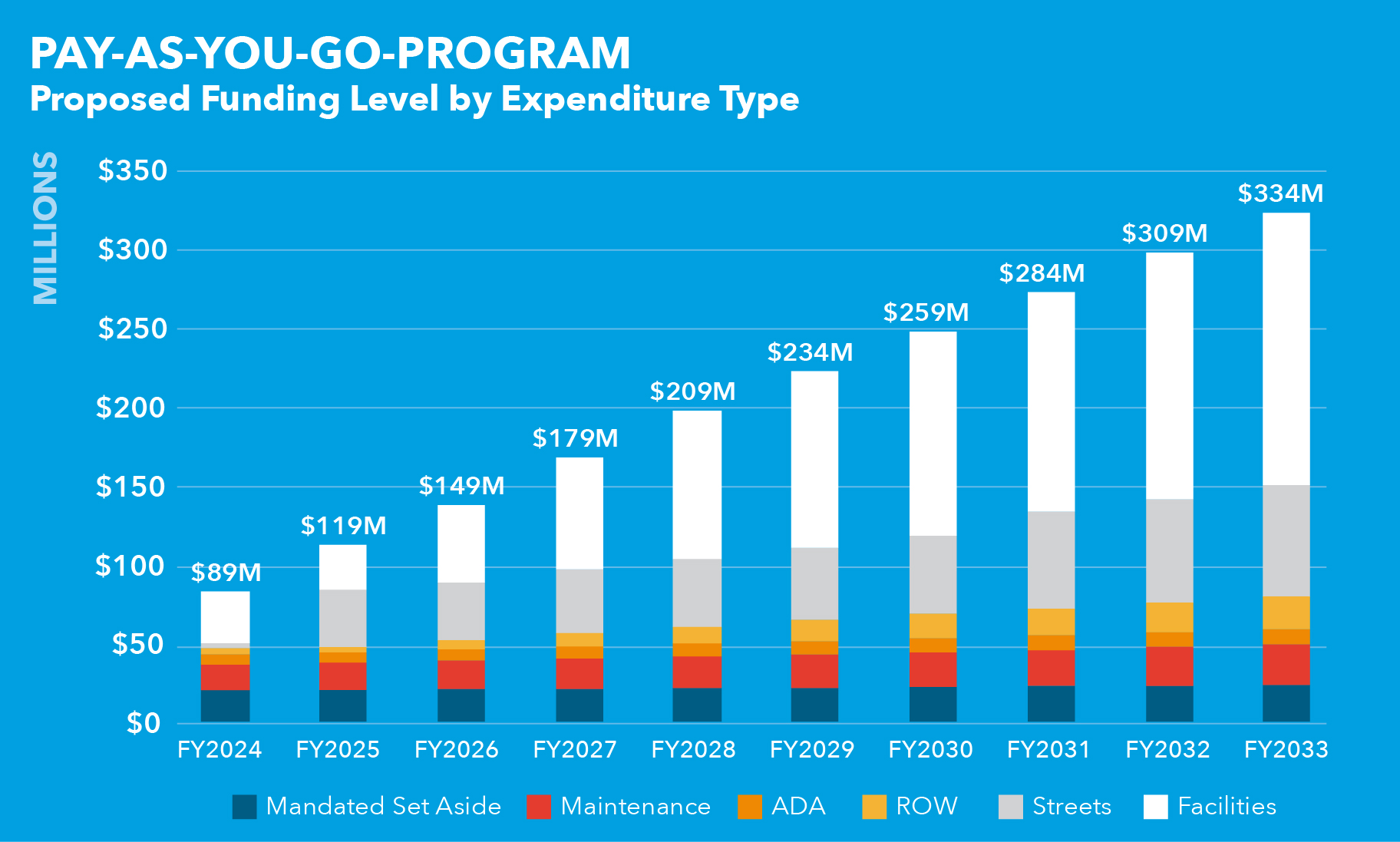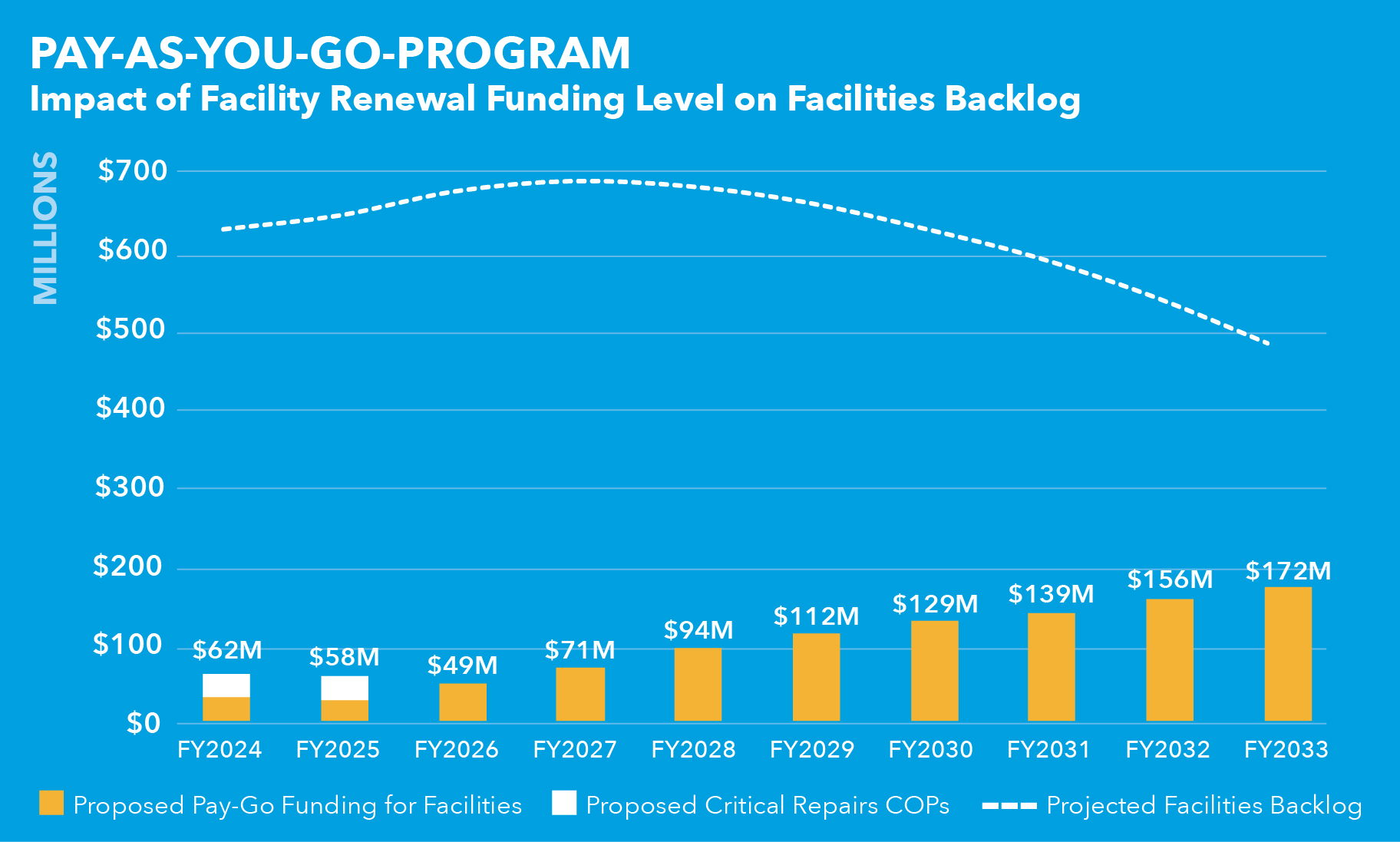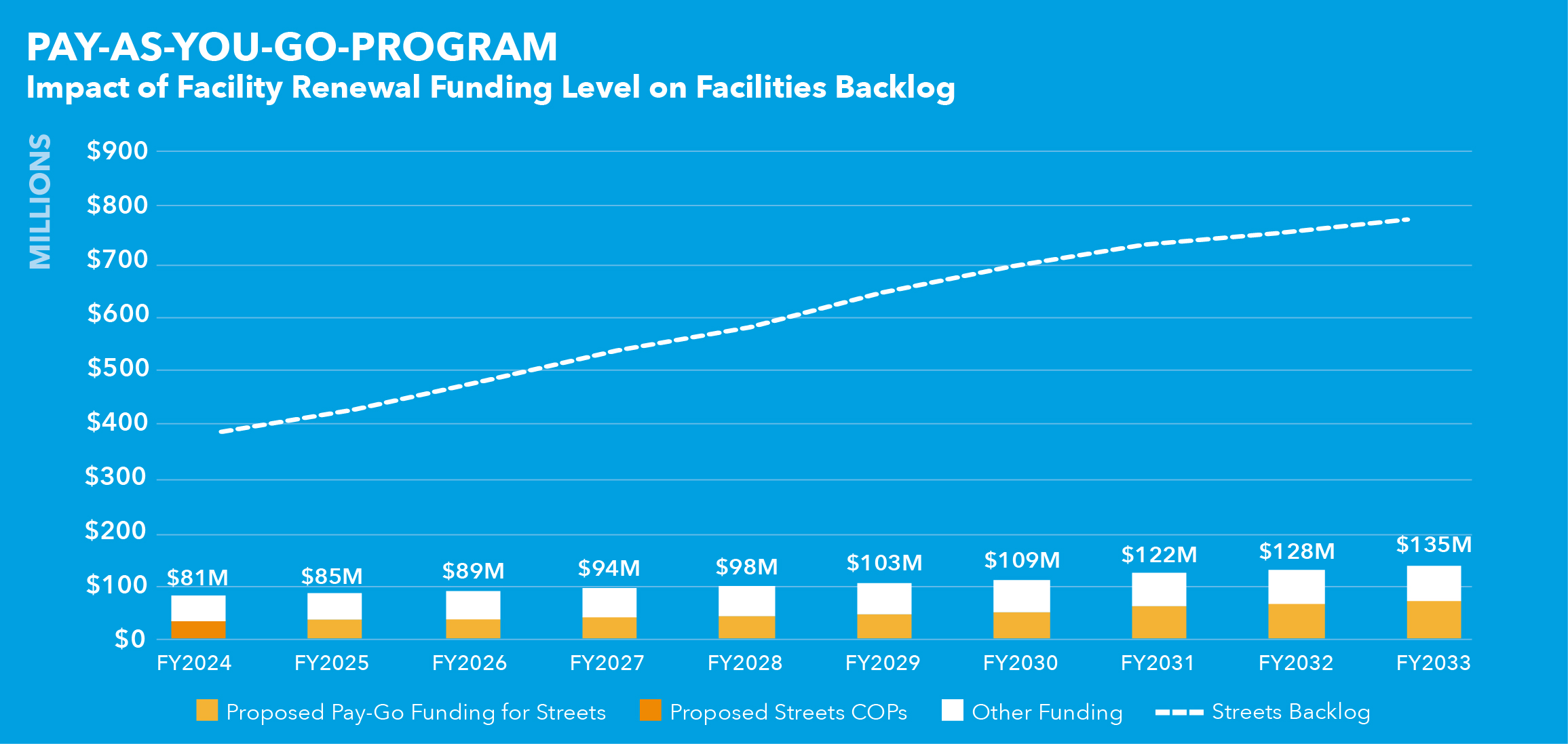A strong economy and the support of the Mayor, Board of Supervisors, and citizens of San Francisco gave rise to historic levels of capital investment in the years leading up to 2020. Since then, the COVID-19 crisis has led to shortfalls in the Pay-As-You-Go Program. In addition, the success of G.O Bonds up to 2020 and slower projected growth of property values, has led to a constrained G.O. Bond Program, with only $2.02 billion in capacity available for the next 10 years. This is $700 million less than the 2020 Capital Plan before considering large increases in infrastructure needs and extremely high construction costs. As such, the ability of G.O. bonds to fund large-scale projects under current constraints will likely be a topic of discussion.
As the City moves towards economic recovery, there are new challenges ahead. Federal programs enacted during COVID are coming to an end and it is less likely that large federal and state infrastructure investments will be available. As such, funds that might have been directed to one-time investments may be needed to shore up ongoing programs to avoid service cuts. At the same time, the age of the City’s infrastructure and projected population growth in formerly industrial areas and the Westside per the newly adopted Housing Element of the General Plan represent new infrastructure demands that will become more pressing over time.
The Plan recommends a level of funding of over $41 billion over 10 years. Despite this, the Plan defers nearly $7 billion in identified needs for General Fund departments, assuming recommended Pay-As-You-Go program funding levels as shown in Chart 2.1.
Chart 2.1
Chart 2.2
Chart 2.3
Years of historic underinvestment in the City’s capital program has resulted in a current facilities backlog of $616 million for General Fund facilities. The backlog is defined as the difference between the total current renewal need and the portion of this need that is funded in the first year of the Plan. The total current renewal need includes both items identified by departments as deferred maintenance, as well as first-year renewal needs. This backlog does not include buildings and sites for Recreation and Parks. While the department has identified a 10-year renewal need of $1.8 billion, funding towards those needs will come from the Recreation and Parks set-aside within the Pay-Go program, as well as the planned 2030 Neighborhood Parks and Open Space G.O. Bond, pending voter approval.
Under this Plan, if the City meets the Plan’s funding recommendations, the existing backlog is projected to start trending downward by FY2028. As compared to the current level, the backlog is projected to decrease 22% to over $480 million, as shown in Chart 2.2. To address the remaining gap, the City continues to investigate various approaches, including revising funding benchmarks, leveraging the value of City-owned assets for debt financing, preparing projects for voter consideration at the ballot, forming public-private partnerships, and exploring new revenue sources.
While the City has made significant progress in improving the quality of its streets in recent years, currently at a Pavement Condition Index (PCI) of 74, a backlog of $382 million remains if the City is to reach a PCI of 83, at which point the year-on-year cost of maintaining the streets declines significantly. Under this Plan, given the funding challenges to the Pay-Go Program due to COVID-19, the streets program has been supplemented with additional funding from Certificates of Participation in FY2024. With these efforts, the PCI is projected to be maintained at 75 over the 10-year period, though the existing backlog is projected to increase to $772 million by FY2033, as shown in Chart 2.3.
Despite the challenges associated with the capital program, there is also reason to be optimistic. The total amount of capital investments exceeds $40 billion for the first time and is a marked improvement over the previous capital plan. Building on lessons learned during the pandemic, San Francisco is committed to building a stronger, more equitable, and resilient future. This includes commitments to increase housing, respond to current hazards like heat, air quality, flooding, and sea level rise through planning documents like the Hazards and Climate Resilience Plan, the Climate Action Plan, and new general plan elements such Public Safety and Resilience, Housing, Transportation, and Environmental Justice. While the investments needed are substantial, the commitment to an open and transparent capital planning process has proven that large challenges can be overcome by working together.
This Capital Plan puts forth a robust plan that balances maintaining current assets in a state of good repair with investments in major projects to build out of the current crisis. Though there are risks associated with construction costs, a substantial capital backlog, and the scale of need, the City’s capital program is well positioned to respond and deliver a strong program of investment for San Francisco’s recovery.
|
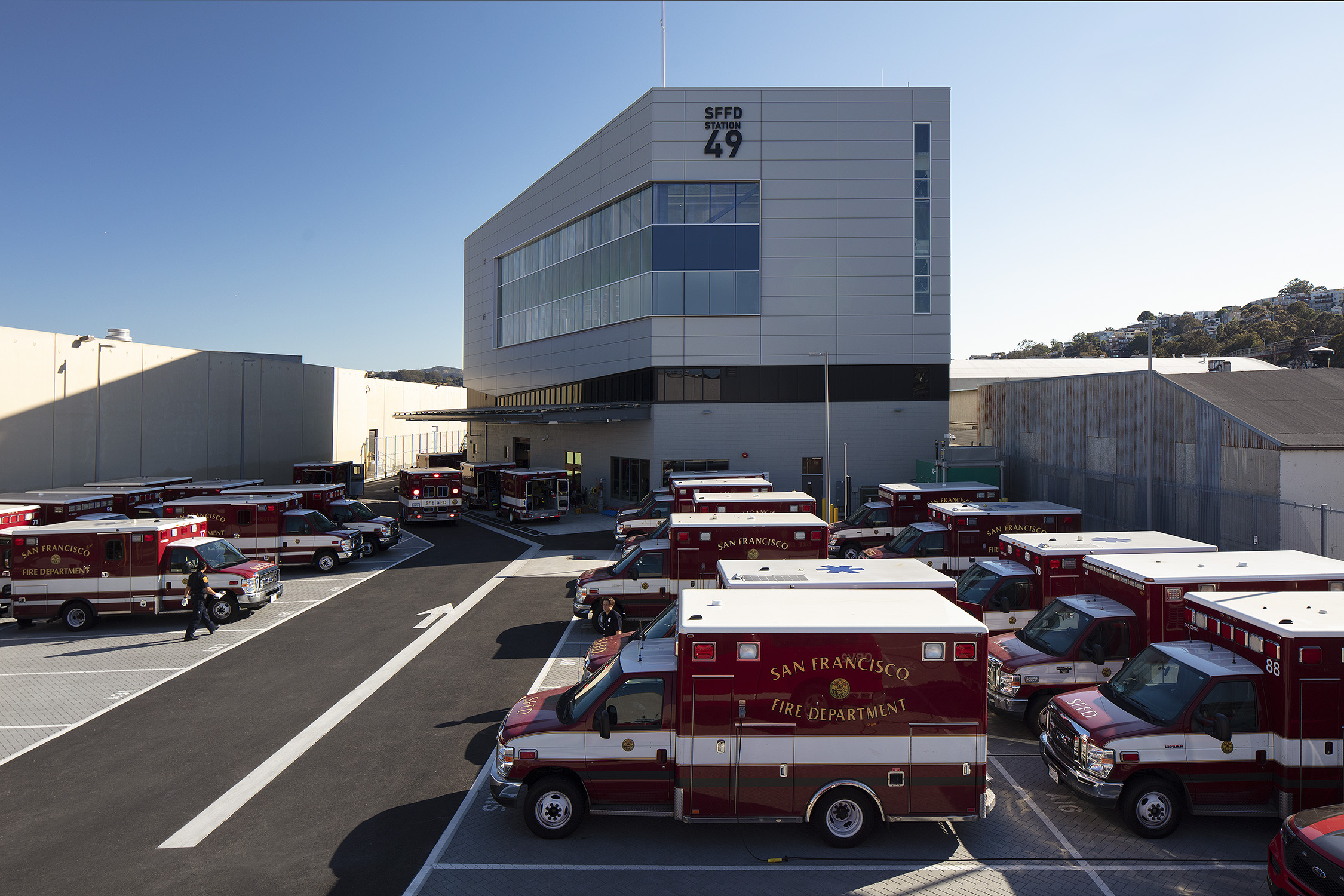
|

|
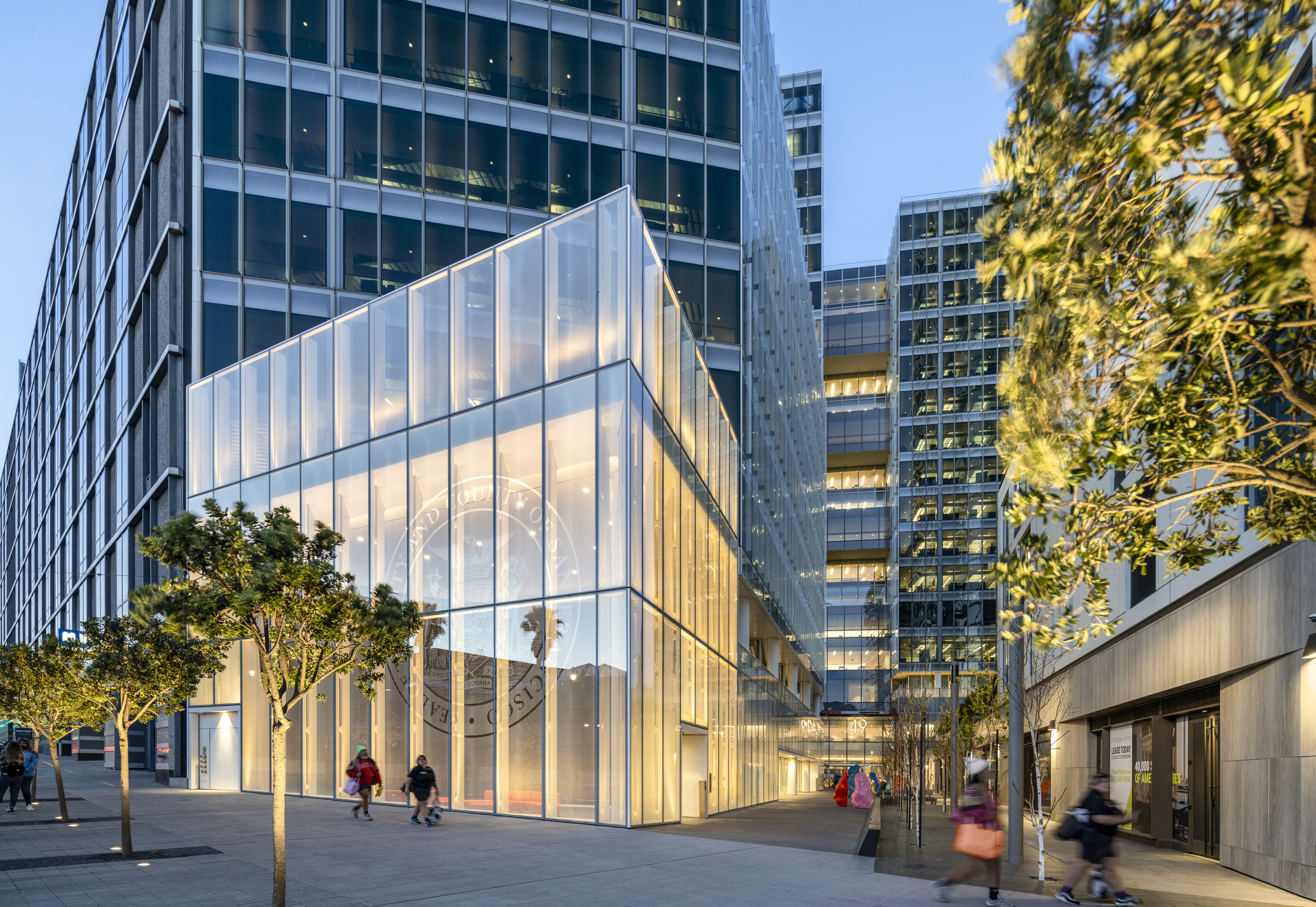
Photo Credit: Mark Schwettmann

